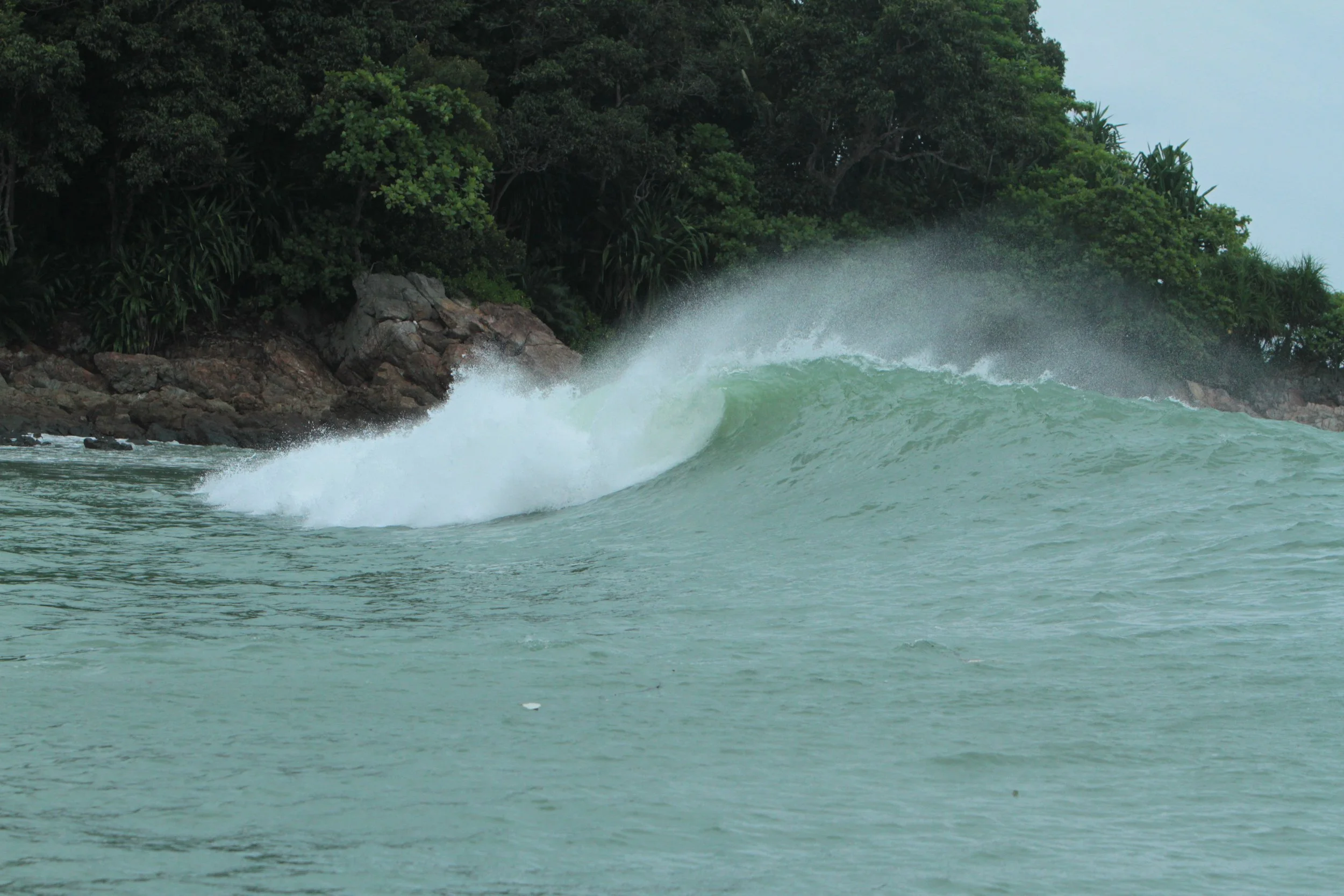Riding Waves Through Time: Surfing's Austronesian Roots to Southeast Asia
“Austronesian Language Family.” Atlantis Java Sea, 16 Jan. 2017, atlantisjavasea.com/2017/01/16/austronesian-language-family/.
In the heart of the vast Pacific, thousands of years ago, the rhythm of ocean waves gave birth to an art form—an ancient dance between humans and the sea. Surfing, often seen today as a modern leisure activity, is far older and richer than many realise. Its roots stretch deeply into the Austronesian cultures, where the ocean was not just a boundary, but a highway that connected islands, peoples, and cultures across vast distances.
The Austronesian Origins
Over five thousand years ago, Austronesian voyagers set sail from Taiwan, navigating skilfully across open oceans in their outrigger canoes. They traversed vast distances, settling islands across the Pacific and Indian Oceans, bringing with them intricate knowledge of seafaring, ocean currents, weather patterns, and celestial navigation. It was within these maritime communities that the earliest forms of surfing emerged, a natural evolution born from a deep familiarity and reverence for the ocean.
These early Austronesian cultures viewed surfing not merely as sport, but as a spiritual and communal practice. Ocean waves were gifts from the gods, and riding them symbolised a deep harmony with nature, spiritual purity, and bravery.
Ancient Hawaiian Surfing: A Glimpse into the Sacred
Centuries later, Polynesian voyagers, descendants of Austronesian, perfected surfing in the Hawaiian Islands. To Hawaiians, surfing—or He'e Nalu (wave sliding)—was deeply intertwined with daily life, religion, and social structure. Chiefs demonstrated their prowess by riding larger boards and waves, showcasing their strength and spiritual connection. Surfing was so revered that special rituals and offerings were performed to ensure favourable waves.
Yet, while Hawaii stands as a beacon of surfing heritage, it is important to recognise that this vibrant culture was seeded by Austronesian navigators, whose skills spread across the vast expanses of Oceania, leaving marks everywhere their boats touched land.
Leonard, Matt George & Lueras. “Bali’s First Surfers.” The Surfer’s Journal, www.surfersjournal.com/editorial/balis-first-surfers/.
Surfing's Quiet Journey into Southeast Asia
Surfing’s arrival into Southeast Asia wasn't marked by historical fanfare but rather quiet cultural assimilation over generations. Long before surfboards graced Balinese beaches and modern resorts dotted Asian coastlines, local fishermen and coastal communities of Southeast Asia, particularly around the Malay Peninsula, unknowingly echoed their Austronesian ancestors' affinity for wave-riding.
Pulau Kapas, mdrn, 2019
Along Malaysia's East Coast, regions like Terengganu, Cherating, and Johor have harboured generations of fishermen who, in pursuit of their livelihoods, developed intimate understandings of tides, currents, and swells. Though not traditionally labeled "surfing," these maritime communities routinely engaged in wave navigation, body surfing, and boat surfing—riding waves back to shore after long days at sea.
Surfing Emerges in Modern Malaysia and Singapore
Surfing as we recognise it today formally arrived in Malaysia in the late 20th century, often through traveling surfers and expatriates who discovered the pristine breaks along the East Coast. Cherating, particularly, emerged as a beacon, attracting early enthusiasts eager to explore its consistent monsoon swells. The village quickly evolved into a nexus of surf culture, blending modern surf ethos with traditional Malay hospitality and coastal wisdom.
Singapore, despite its limited natural surf breaks, soon became a critical cultural and logistical node within Southeast Asia's growing surf scene. Its strategic location and cosmopolitan environment fostered communities passionate about ocean conservation, sustainability, and cultural exchange, contributing significantly to regional surfing awareness.
Surfing as Cultural Renaissance
Today, surfing in Malaysia and Singapore is undergoing a profound renaissance. The movement is not merely about sport or recreation; it's a reclamation of heritage—recognising that the ocean has always been part of the region’s cultural fabric. Contemporary surfers in Southeast Asia are reconnecting with their Austronesian past, uncovering stories embedded in maritime traditions, and reviving cultural pride through surfing.
Initiatives like Peninsular Surf Research (PSR) highlight the transformative power of technology, design, and collaboration in fostering surf culture. By integrating ancestral wisdom with modern innovation, PSR symbolises a collective effort to respect the ocean’s legacy, nurture sustainable practices, and foster communal identity.
Looking Forward: Surfing as a Cultural Connector
As waves continue to shape the shores of Southeast Asia, surfing remains a powerful symbol of cultural unity and sustainability. It's not just a practice passed through generations; it's a dynamic dialogue between past and present. From the ancient Austronesian voyagers to modern surfboard artisans in Johor Bahru, Cherating, and beyond, surfing continues to connect communities, transcend cultural boundaries, and inspire new generations to cherish their oceans.
The story of surfing’s journey—from ancient Austronesian seafarers through Polynesian mastery to its contemporary blossoming in Southeast Asia—is one of resilience, cultural fusion, and enduring reverence for the ocean. It invites each of us, surfers or not, to reflect upon our place in the continuous flow of history, reminding us that the act of riding a wave is a timeless dialogue between humanity and the sea.





